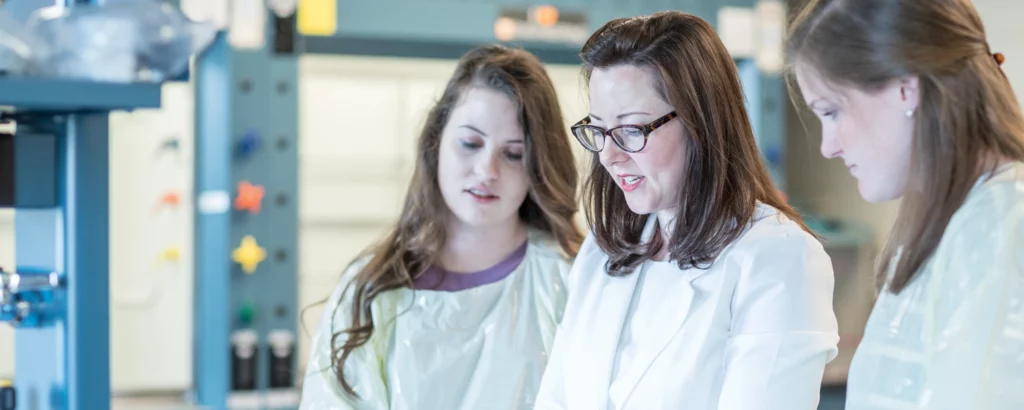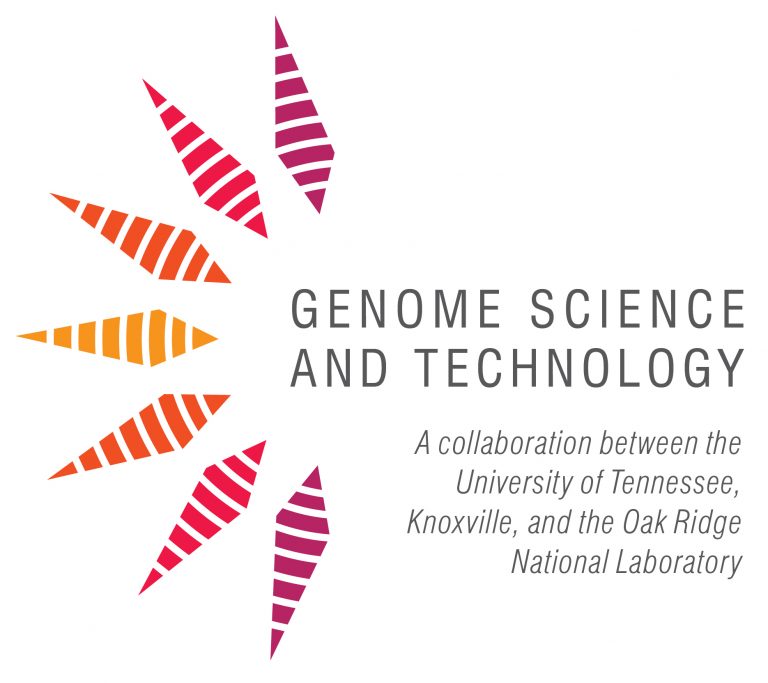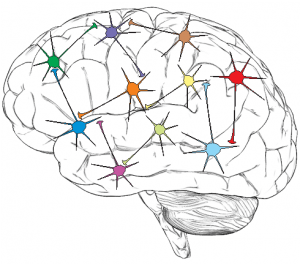
Centers and Partners
The Department of BCMB is engaged in a broad range of interdisciplinary activities. There are a variety of connections across the UT campus, at Oak Ridge National Lab, and beyond. Examples of important research centers and partners with which BCMB researchers interact are given below:
Genome Science & Technology Program (GST)

The GST program is a graduate program that spans many departments at the UT-Knoxville, UT Institute of Agriculture, and Oak Ridge National Lab. This program is based on the premise that large-scale datasets and advances in technology are transforming how we do biology. Research areas of faculty in GST include Molecular Genetics and Systems Biology, Structural and Nanoscale Biology, Analytical Technologies for Bioenergy and the Environment, Computational Biology and Bioinformatics, and Computational Molecular Biophysics. Most BCMB faculty are part of this program.
Tennessee Plant Research Center (PRC)

BCMB’s strong research area in plant sciences provides a natural opportunity to build bridges to the UT Institute of Agriculture. Recently, faculty working in plant sciences from many departments across the Knoxville and Agricultural campuses and ORNL have joined forces to establish the Tennessee Plant Research Center (PRC). Established in 2010, PRC brings plant scientists together for monthly colloquia with both internal and external speakers. PRC faculty are interested in combining resources to advance training, particularly at the graduate level, to promote plant science in the Knoxville area. Andreas Nebenführ is BCMB’s liaison to PRC and also serves as PRC co-director together with Neal Stewart (Dept. of Plant Sciences).
Neuroscience Network of East Tennessee Research Center (NeuroNET)

The NeuroNET Research Center was formed in 2014 under the leadership of Rebecca Prosser (current Director) and Jim Hall. It comprises more than 100 scientists across multiple colleges on campus, the UT Medical Center of Knoxville, and Oak Ridge National Laboratory. The NeuroNET Research Center seeks to unite and expand Neuroscience research and education in and around UT and act as a catalyst for innovative Neuroscience research that will attract world-class scientists, clinicians, and students. Research expertise within NeuroNET includes Cellular and Molecular Neuroscience, Cognitive and Behavioral Neuroscience, Systems Neuroscience, Neural Engineering and Computational Neuroscience, and Clinical Neuroscience/Nervous System Disorders.
The UT/ORNL Center for Molecular Biophysics (CMB)

The CMB was established in 2006 by Jeremy Smith and his colleagues. The principal scientists in the group include Smith, Hong Guo, and Tongye Shen from BCMB. CMB’s goal is to study and understand the function of biologically relevant molecular systems by employing high-performance computer simulations in combination with biophysical experiments. Project highlights include work on protein dynamics, catalysis, petascale molecular dynamics, the cellulosome, dynamic visualization of lignocellulose, and biomass recalcitrance. The center takes advantage of the computing power available at UT and ORNL, which house two of the top five performing computers in the world at present.
The National Institute for Mathematical and Biological Synthesis (NIMBioS)

UT is home to NIMBioS, an institute dedicated to promoting research at the interface of biology and mathematics. The institute was established in 2008 when UT was chosen as the site for a new center in an open competition with major research entities across the country for the five-year, $16M award. Lou Gross (Math, EEB) is the director of NIMBioS, and Cynthia Peterson serves on the leadership team for the institute in the role of associate director for Graduate Education. NIMBioS arose from a new collaboration between the National Science Foundation, the US Department of Homeland Security, and the US Department of Agriculture. The ongoing challenges of maintaining a safe food supply, avoiding economic disruptions caused by emerging infectious diseases, and evaluating methods to better manage the inevitable disease outbreaks that develop due to globalization, may best be investigated by integrating modeling and mathematics with the biological studies which are critical to the formulation of public policy to address these challenges. NIMBioS focuses the talents of researchers from around the world to collaborate across disciplinary boundaries and take an integrative approach to investigate these challenges to linked natural and human social systems. NIMBioS is a national resource, hosting teams of scientists from across the world in working groups and workshops who submit proposals that are reviewed on a competitive basis.
The Sustainable Energy and Education Research Center (SEERC)

The primary mission of SEERC is to promote research and education in the area of sustainable energy. SEERC is primarily housed in the College of Engineering, with Bamin Khomami as the center’s director. Barry Bruce is the center’s associate director, representing the College of Arts and Sciences and bioenergy/biofuels efforts. SEERC aims to leverage partnerships with ORNL, the Department of Energy, and with many institutes across campus in its research, education, and innovation efforts. The strategy adopted by SEERC is the strategic investment of resources to fund, seed research and educational projects, and develop infrastructure to further strengthen existing areas of excellence in sustainable energy and/or promote new directions.
Neutron Facilities and the UT/ORNL Joint Institute for Neutron Sciences (JINS)

ORNL houses two facilities for performing experiments with neutrons that are valuable for biologists, and particularly for several within BCMB who have worked at these facilities (professors Jain and Smith). These are the High Flux Isotope Reactor (HFIR), housing instruments for small-angle neutron scattering experiments, and the Spallation Neuron Source (SNS), where a workstation for neutron crystallography for biological samples is scheduled for completion in 2012. Other instruments at the SNS are used for a variety of measurements on biological samples at various time and length scales. Access to these instruments and education/research revolving around neutron science is supported by the activities of an institute formed between UT and ORNL, the Joint Institute for Neutron Sciences (JINS). JINS was conceived to serve as an intellectual hub for the neutron science community and to enhance and support research at SNS and HFIR.
The Center for Structural Molecular Biology (CSMB)

Neutron sciences are also promoted through activities at the Center for Structural Molecular Biology at ORNL. The CSMB, which is spearheaded by Dean Myles at ORNL, is dedicated to developing instrumentation and methods for determining the three-dimensional structures of proteins, nucleic acids (DNA/RNA), and their higher order complexes. The tools of the CSMB will help understand how these macromolecular systems are formed and how they interact with other systems in living cells. The focus of the CSMB is to bridge the information gap between cellular function and the molecular mechanisms that drive it. The suite of tools being developed by the CSMB includes SANS capabilities, isotope labeling laboratories, computational techniques for analyzing SANS data, and neutron diffraction, spectroscopy, and scattering tools.
Tennessee Teaching and Learning Center
The TennTLC is where faculty members and graduate students can go to engage students and enhance learning through a better understanding of students’ learning styles, motivators, and life experiences, improve their teaching practice with guidance on course design, course management, effective pedagogies, and meaningful assessment tools, access and apply information on new pedagogies informed by research into student learning, classroom dynamics, content delivery, and cognitive processes, discover how to best address problems with course management and student behavior issues in the classroom, request facilitation on program-wide curriculum revision, explore avenues for scholarly teaching and faculty inquiry, to increase their level of engagement with the scholarship of teaching and learning and discuss issues regarding career and professional development in a safe, confidential space